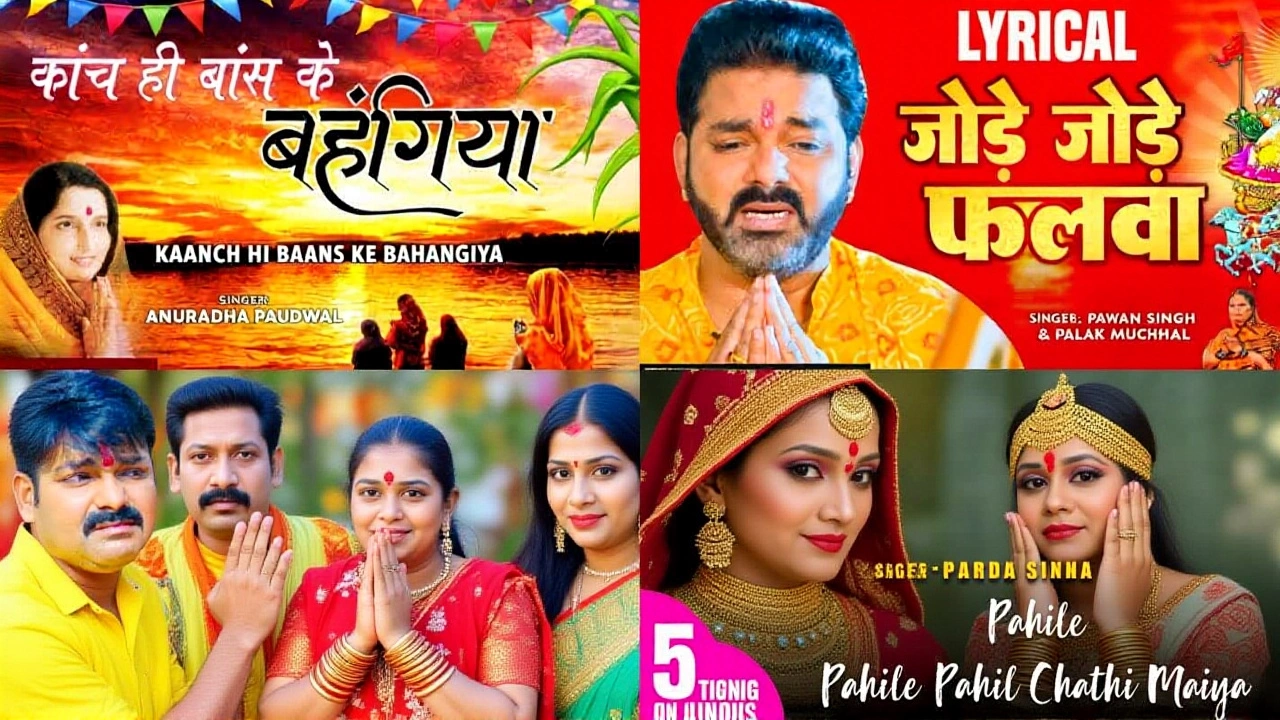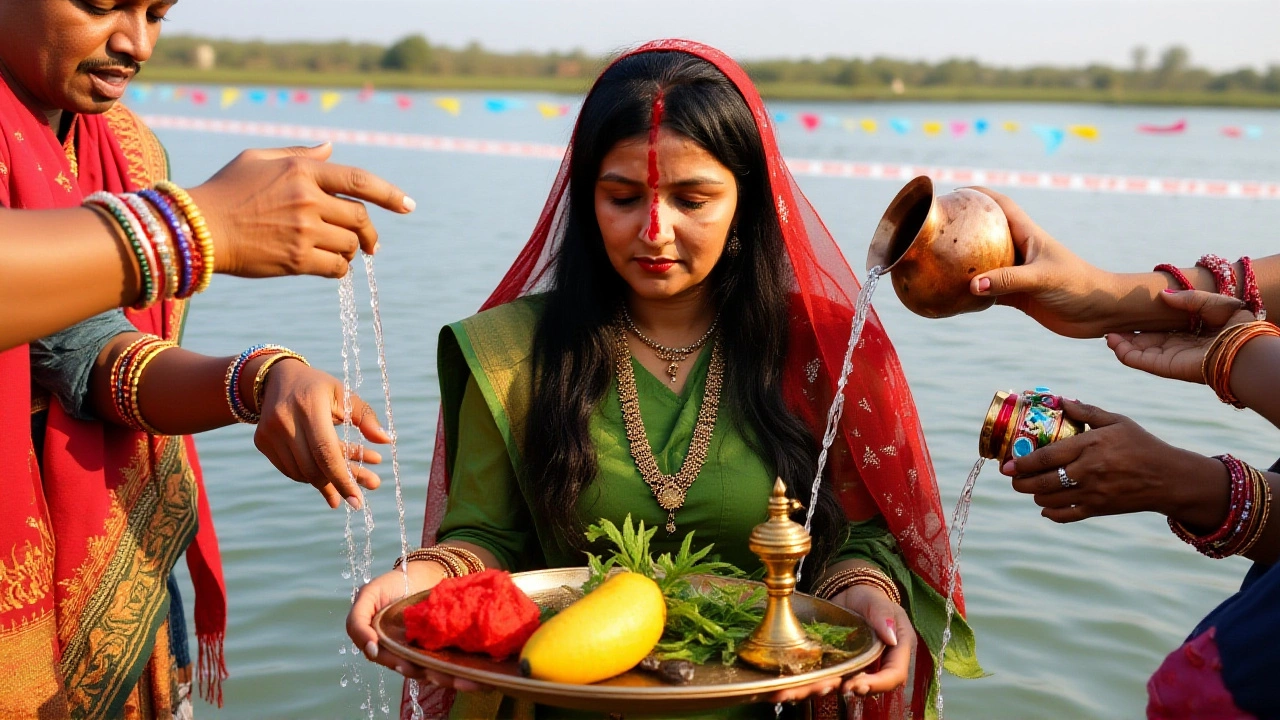When Chhath Puja Bihar rolls around this year, millions of devotees across eastern India will pause to honor the Sun.
What the Calendar Says: Exact 2025 Dates and Timings
According to a blog post from Paytm dated 22 October 2025, the four‑day observance will begin on Saturday, 25 October and conclude on Tuesday, 28 October. Astrologers have calculated sunrise and sunset for each day with minute‑level precision. For example, on Day 1 (Nahay Khay) sunrise is at 06:41 AM and sunset at 06:06 PM; on the final day (Usha Arghya) sunrise will be at 06:42 AM while sunset slips to 06:04 PM.
The evening arghya on 27 October is slated for 05:40 PM, and the culminating morning offering on 28 October will occur at 06:30 AM. These timings are corroborated by multiple astrology portals, including Ganeshaspeaks, which also notes the festival aligns with the sixth day (Shashthi) of the Kartik month in the Hindu lunar calendar.
How the Rituals Unfold: Day‑by‑Day Breakdown
Each day follows a strict sequence of rites that blend physical purity with spiritual devotion. Below is a quick snapshot:
- Nahay Khay (25 Oct): Devotees take a holy dip in a river or pond, then enjoy a satvik meal free of onion and garlic.
- Kharna (26 Oct): A water‑less fast lasts until sunset, when the break‑fast of jaggery kheer, roti and seasonal fruits is shared as prasad.
- Sandhya Arghya (27 Oct): At dusk, worshippers stand waist‑deep in water, holding bamboo baskets (soop) loaded with thekua, fruits and sugarcane, and chant verses to the setting sun.
- Usha Arghya (28 Oct): Before sunrise, participants offer prayers to the rising sun, then break the fast together, often with a communal feast.
The whole process is overseen by the twin deities: Surya, the Sun God, and Chhathi Maiya, his sister, who together embody life‑giving energy and maternal protection.
Why It Matters: Cultural and Spiritual Layers
Paytm describes the festival as a "deeply spiritual and culturally rich" expression of gratitude toward nature’s most constant source of light. The ritual’s emphasis on purity—no water during the fast, a single vegetarian meal per day—mirrors ancient Vedic notions of self‑discipline and harmony with the cosmos.
Vedic astrology believes that Chhathi Maiya “preserves and grants longevity to offspring,” which explains the surge of families with young children flocking to riverbanks for the arghya ceremonies. Republic World adds that the observance is a plea for health, both personal and communal.
Although the festival originated in Bihar, Jharkhand and eastern Uttar Pradesh, its reach has widened. Migrant communities in metropolitan hubs like Delhi, Mumbai and even abroad in Nepal’s Terai region now stage similar rites, often adapting the water‑body requirement to local lakes or community pools.

Modern Visibility: From Folk Roots to National Spotlight
In recent years, Chhath Puja has migrated from a regional folk celebration to a nationally televised event. Satellite channels broadcast the evening arghya live, and social‑media platforms flood with photos of glittering diyas floating on the Ganges. The surge in digital coverage has prompted tourism boards in Bihar and Jharkhand to promote river‑front festivals as cultural attractions.
Experts at Vedantu point out that the festival’s timing—exactly one week after Diwali—creates a natural continuation of light‑focused celebrations, reinforcing a narrative of triumph over darkness that resonates across India.
Expert Voices: Interpreting the Symbolism
Dr. Anjali Mishra, a professor of anthropology at Patna University, told reporters that "the act of standing waist‑deep in water while offering the sun is a literal immersion of the self into nature’s cycles. It’s a reminder that human life thrives only when we respect the planetary rhythms."
Astrologer Ramesh Kumar of Ganeshaspeaks emphasized that the precise sunrise and sunset calculations are not mere superstition; they align the human heartbeat with solar rhythms, which, according to traditional texts, boosts metabolic health and mental clarity.

What’s Next: Anticipating 2026 and Beyond
Looking ahead, organizers are already planning to use renewable‑energy lighting for night‑time gatherings, aiming to make the festival greener. The Bihar Tourism Department announced a pilot project to clean up riverbanks ahead of the 2026 festivities, hoping to attract eco‑tourists.
Meanwhile, diaspora groups in the United States and the United Kingdom are experimenting with virtual arghya ceremonies, allowing relatives abroad to join the sunrise prayers via live stream. The blend of age‑old ritual and modern technology suggests that Chhath Puja will continue evolving while keeping its core reverence for the Sun intact.
Frequently Asked Questions
When and where is Chhath Puja 2025 observed?
Chhath Puja 2025 runs from Saturday, 25 October to Tuesday, 28 October. The main observances take place along rivers and ponds in Bihar, Jharkhand and eastern Uttar Pradesh, with satellite ceremonies in major Indian cities and diaspora hubs worldwide.
What are the key rituals performed each day?
Day 1 (Nahay Khay) involves a holy dip and a satvik meal. Day 2 (Kharna) is a water‑less fast broken at sunset with jaggery kheer. Day 3 (Sandhya Arghya) sees devotees offering prayers to the setting sun from waist‑deep water. Day 4 (Usha Arghya) concludes with sunrise offerings and the breaking of the fast.
Why is Chhathi Maiya especially important for families?
According to Vedic astrology, Chhathi Maiya is believed to preserve longevity and protect offspring. Families with young children often pray to her for health, guidance and a prosperous future, making her worship a central emotional pillar of the festival.
How is the festival adapting to modern times?
Live‑streamed arghya rituals, eco‑friendly riverbank clean‑ups, and renewable‑energy lighting are among the new initiatives. Diaspora communities are also hosting virtual gatherings, enabling global participation while preserving the core rituals.
What is the significance of the timing relative to Diwali?
Chhath Puja falls exactly one week after Diwali, extending the season of light. This proximity reinforces the thematic link between triumph over darkness (Diwali) and gratitude to the Sun’s life‑giving energy (Chhath), creating a seamless spiritual continuum for worshippers.
